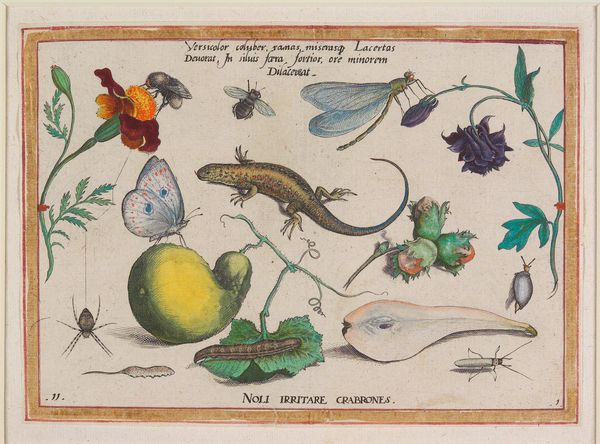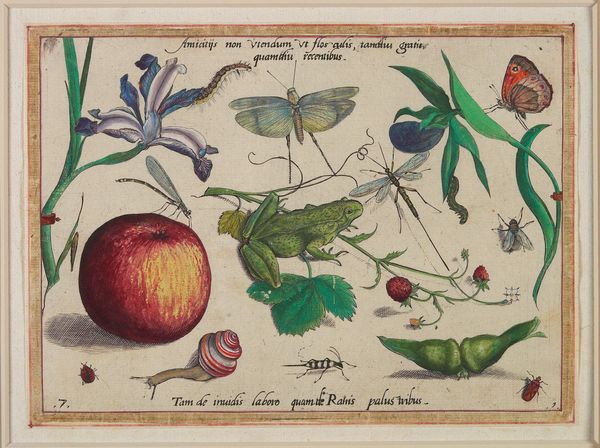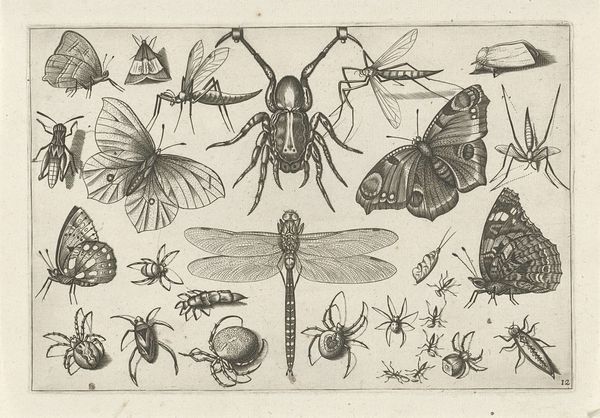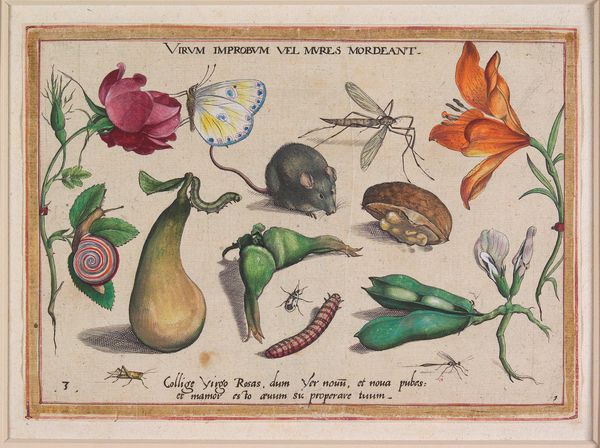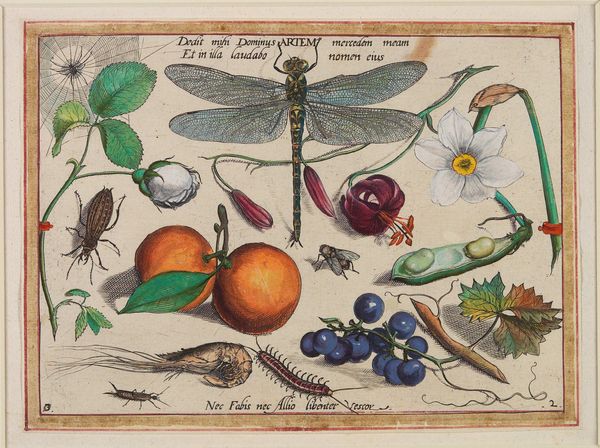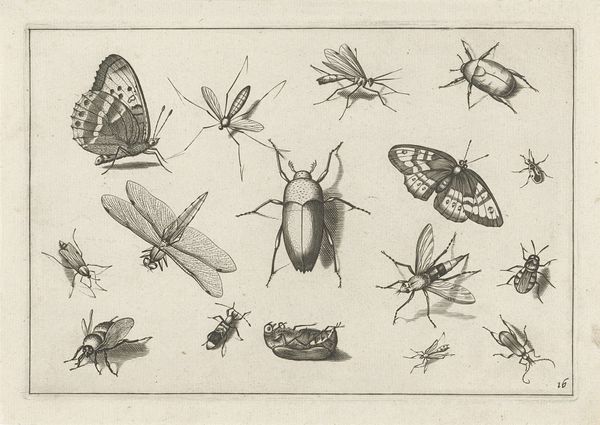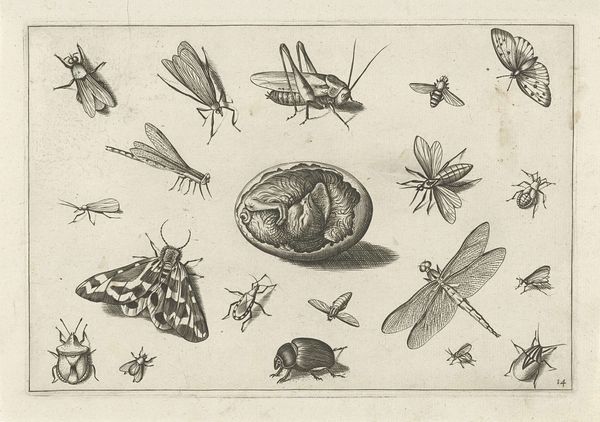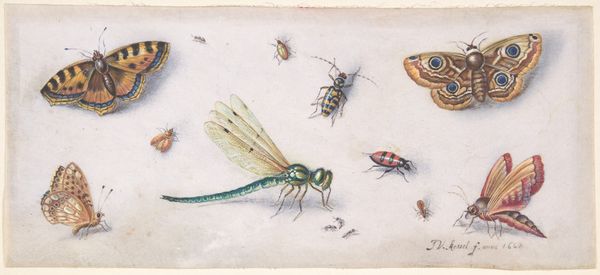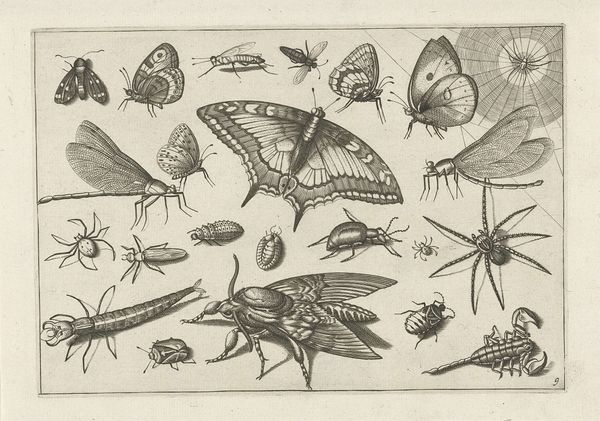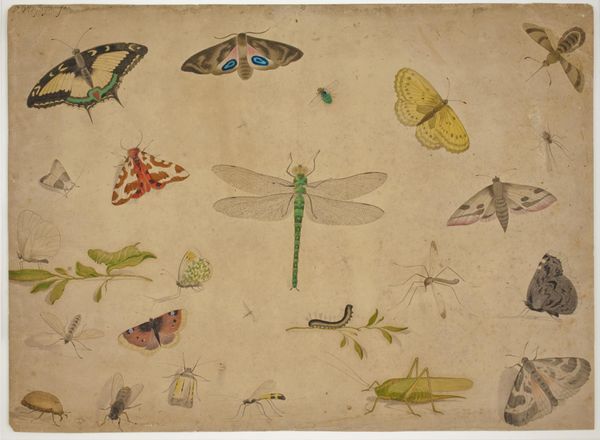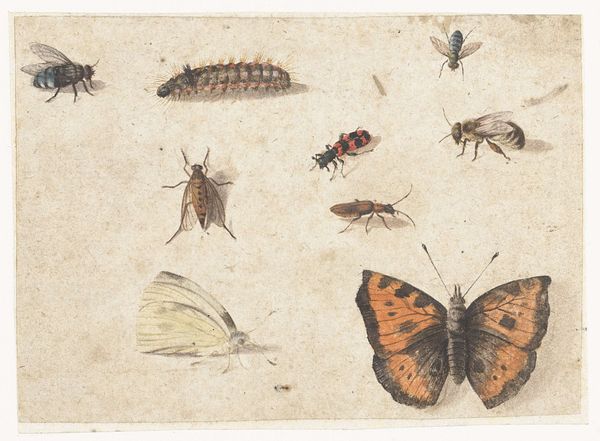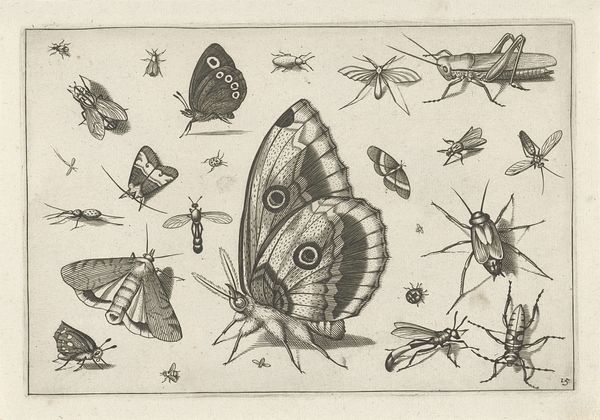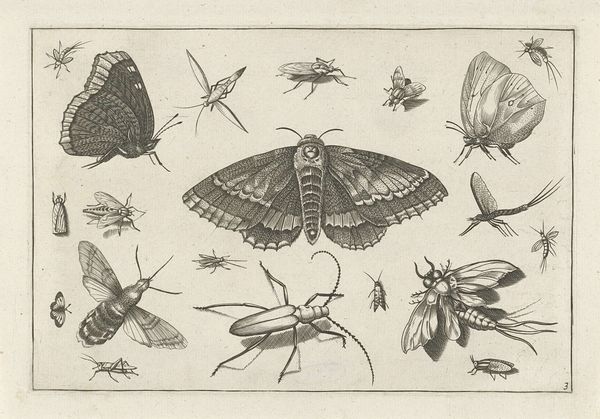
coloured-pencil, painting, print, watercolor
#
coloured-pencil
#
painting
# print
#
11_renaissance
#
watercolor
#
coloured pencil
#
genre-painting
#
northern-renaissance
#
academic-art
#
miniature
#
watercolor
Dimensions: 6 x 8 1/2 in. (15.24 x 21.59 cm) (plate)
Copyright: Public Domain
Curator: Here we have "Regum locustae non habent" created in 1592 by Jacob Hoefnagel. It’s currently located in the Minneapolis Institute of Art and done in watercolor and colored pencil, a captivating blend. Editor: It immediately strikes me as incredibly detailed and meticulously rendered. There’s a strange juxtaposition of vulnerability and observation—these insects and produce rendered in such crisp clarity, yet appearing almost… still and silent. Curator: That stillness reflects a broader shift in the late Renaissance towards empirical observation. Hoefnagel wasn't just creating a decorative piece, he was contributing to the era's understanding of the natural world. Think of the work of natural philosophers. Editor: Yes, the meticulous detail speaks to that pursuit of scientific understanding, the symbolism is rich too. I keep being drawn back to the inscription in Latin. It looks like it’s commenting on social hierarchies through the imagery of insects. Curator: Precisely. “Regum locustae non habent” translates to “locusts have no king”. It subtly critiques the existing power structures of the time, maybe an idea that swarming, collaborative effort overcomes single rule. What does that butterfly convey? Editor: Ah, the butterfly. Visually it takes center stage, its vibrant wings dominating the composition. Given its transformation through the chrysalis, doesn’t that feel like the symbolic visual representation of renewal and perhaps even resurrection? Curator: Exactly. And positioned amongst insects described as ‘without a king’, is that visual rhetoric for challenging old authority? I feel as though the selection of fruits and vegetables here—the lemon, pear, peas—adds layers of commentary about society's harvest and labor distribution. What's fascinating here is how it engages ideas of labor with its presentation of natural imagery. Editor: The work's beauty doesn't obscure its sharper, critical edge. Those colors of ripeness contrasted against some creatures considered blights—this is no simple nature study! This intersection allows for a profound statement about life, change, and communal strength. Curator: Seeing how symbols can be strategically mobilized by artists allows us to re-examine historical narratives, even today, for their socio-political reverberations. Editor: Absolutely! A visual reminder that understanding the past helps us analyze the present more incisively.
Comments
No comments
Be the first to comment and join the conversation on the ultimate creative platform.
